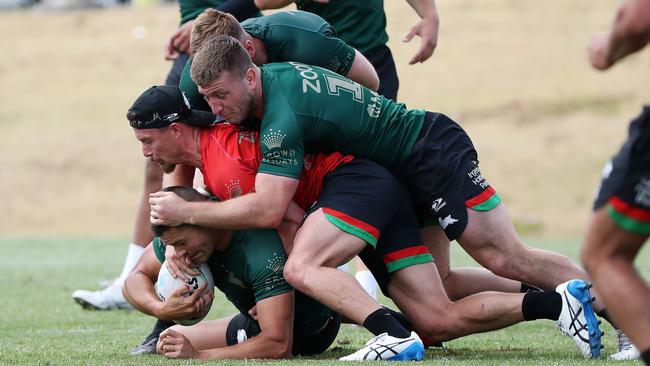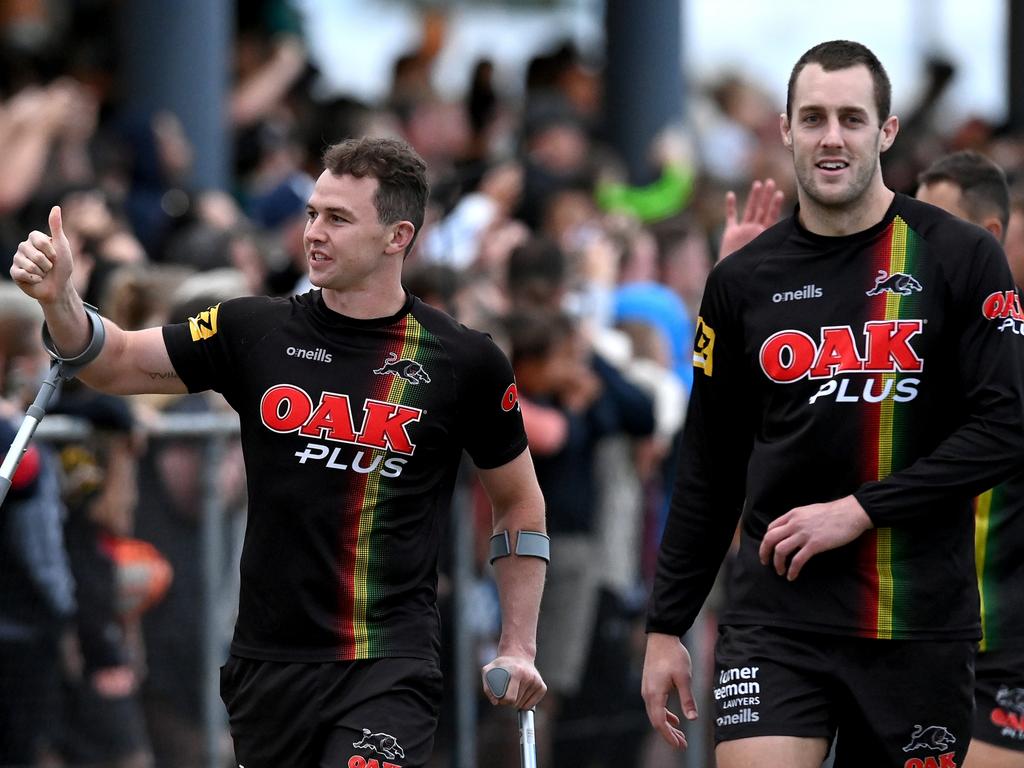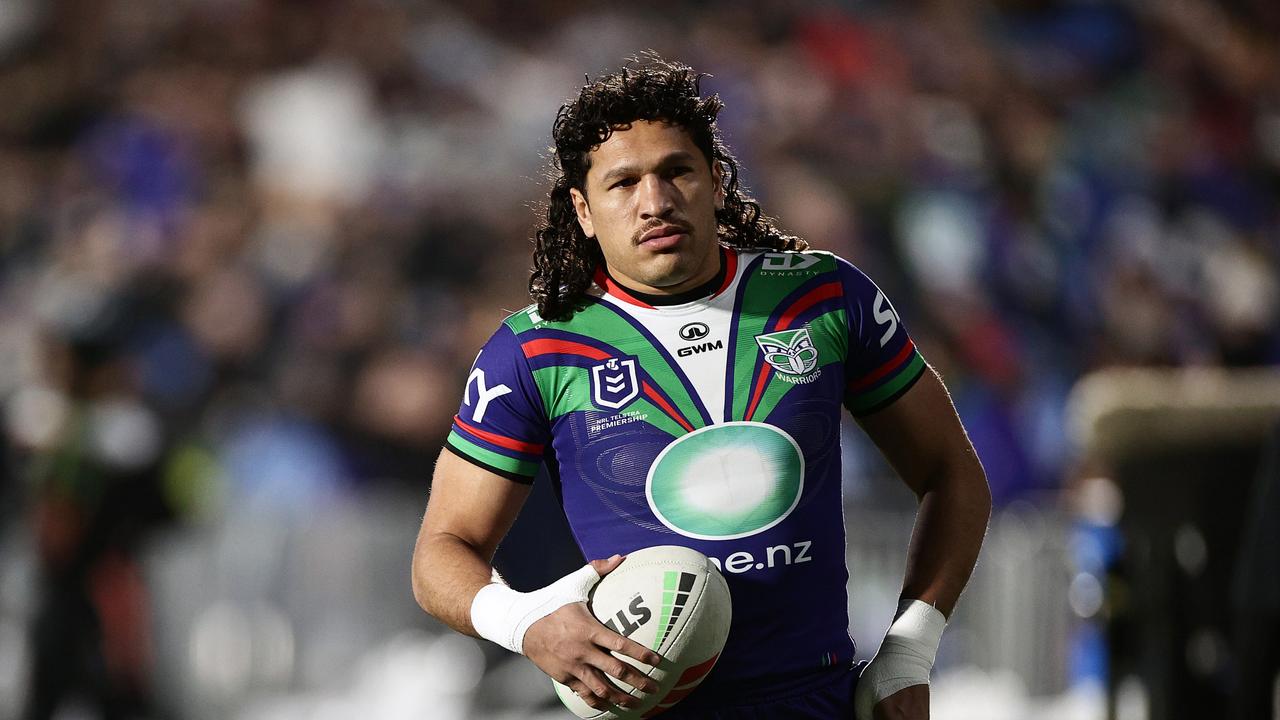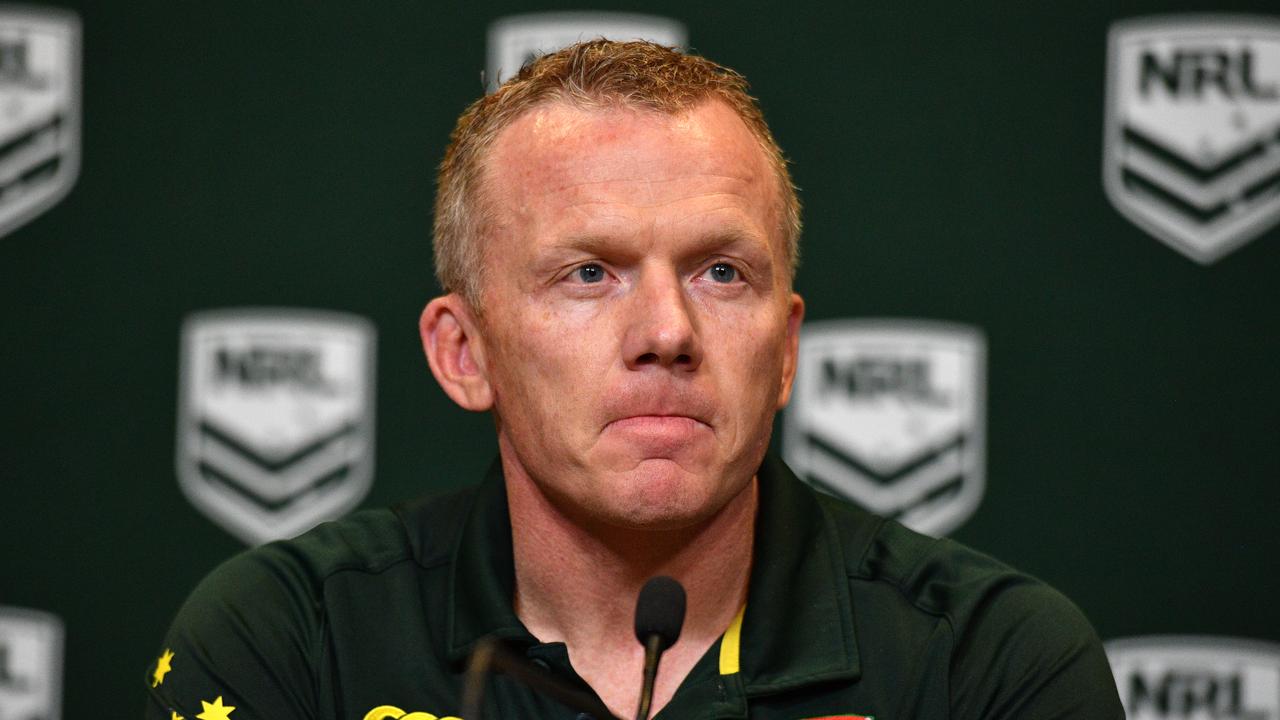No soul-searching for Rabbitohs tragics
South Sydney brings together the rich, the famous, the broke, the browbeaten, the Indigenous, the multicultural and the Anglo-Australian.
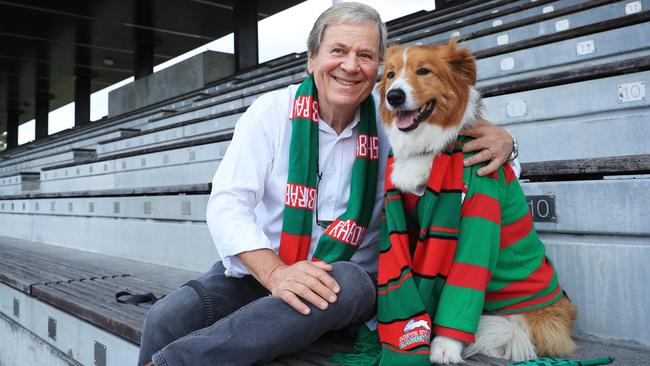
“Soul.” I’ve spent decades trying to capture the essence of South Sydney. Spent decades visiting Redfern Oval to witness the rich, the famous, the broke, the browbeaten, the Indigenous, the multicultural and the Anglo-Australian army of supporters coming together under Rabbitohs banners that invariably pronounce, “Till I Die”.
Never have I been able to describe it properly, falling hopelessly short year after year.
There’s always been a palpable magic in the joint – but it’s been grittier than magic. There’s always been guts in the joint – but it’s been more mystical than guts. When a better wordsmith than I, Ray Martin, takes a seat and starts talking about his seven decades as a club supporter and powerbroker, I figure he’s the bloke to deliver a more authoritative description.
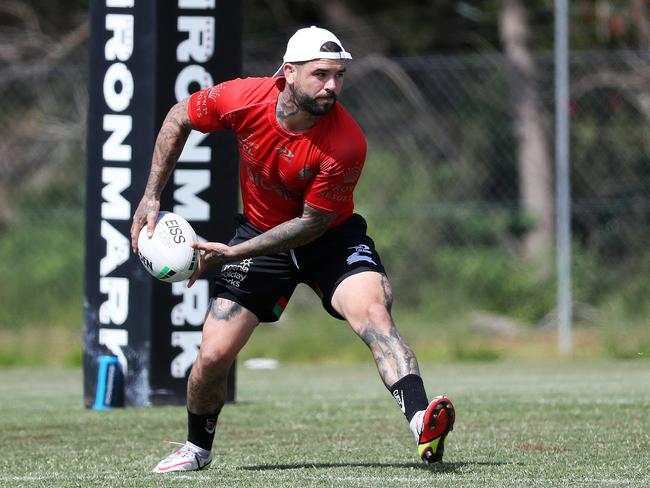
He was six when he saw Souths win the 1951 grand final. Seventy years later, he doesn’t find the right words because he needs only one.
“Soul,” he says.
And that sounds about right.
The soul a club gets from winning league’s inaugural premiership in 1908. The soul a club gets from chasing a 22nd title on Sunday. The soul a club gets from being the winningest of all. More than that, the soul a club gets from having an Aboriginal first-grader when the Indigenous were deemed second-rate. The soul a club gets from its Souths Cares program, which genuinely helps those in need. The soul a club gets from being kicked out of the comp for three years … and coming back from the dead.
“Soul,” Martin says again. “It goes way beyond a regular sort of following you get at other clubs. People get devoted. People volunteer. They do things simply because they fall in love with the place. It’s above the norm at Souths. For so many people here, the most important thing outside of their kids is South Sydney.
“We’re successful now and we can no longer claim we’re dirt poor, but the working-class beginnings have given the club a character that will never change.”
From 1951 until now, from Clive Churchill to Cody Walker, Martin’s seen and heard it all.
“I was six, nearly seven, for that 1951 grand final,” he says. “We lived in the bush. We came to Sydney by train just to watch it, stayed at an uncle’s place at Paddo. Gunnedah was probably the biggest city I’d seen before then. Dad walked me from Central to the Sydney Cricket Ground. I’d never seen a crowd like it. From that day in 1951, which is quite a few days ago now, I have been in love with South Sydney.”
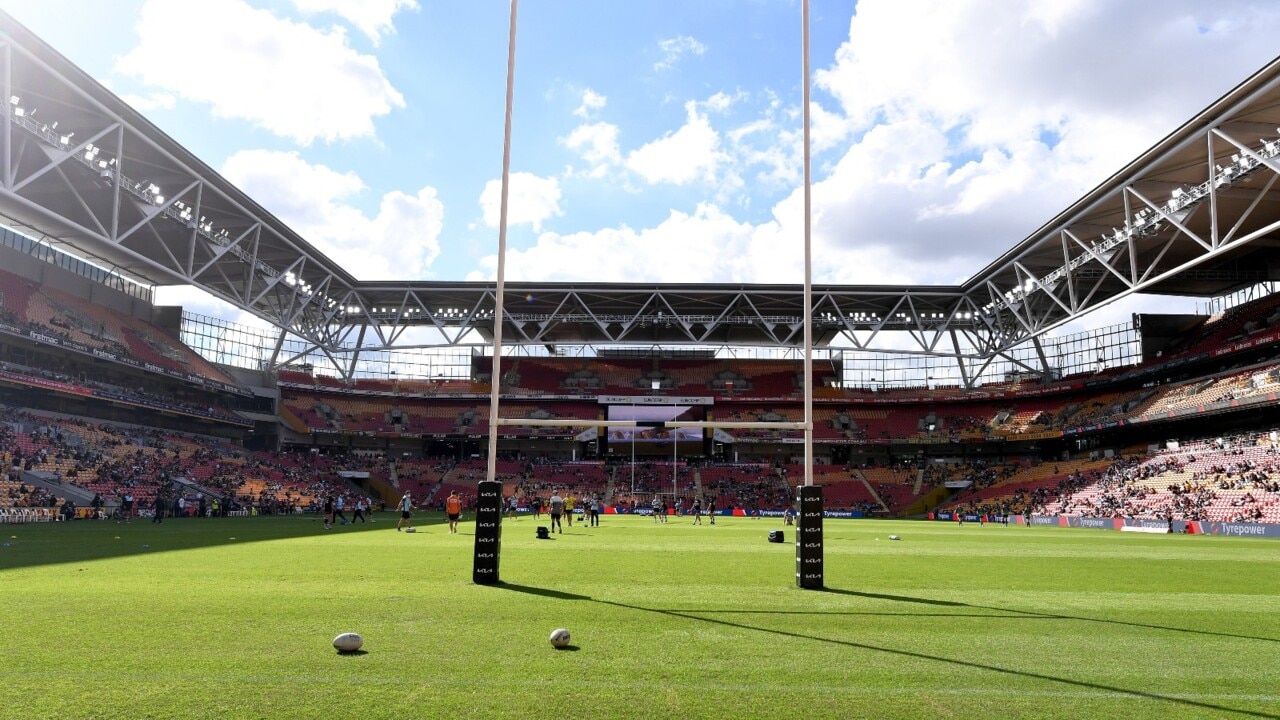
Deepest memories? He says: “Games here at Redfern when I was growing up. A group of Aboriginal women would camp at the end of the ground with their blankets and picnic blanket. The grandstand had rotting concrete, like cancer. They’d have watched the training sessions all week so they knew what they were talking about. They knew more than the commentators. They’d sit there and make their presence felt. You dropped the bloody ball on Tuesday! No wonder you’re doing it again now, you idiot! They were madly enthusiastic. They came from that Aboriginal core of the club. They were raw — and they were wonderful.”
Souths jerseys were prominent around Redfern on Thursday, although the streets were quieter than normal, of course. “Walker” was stamped on quite a few backs, a nod to the mercurial Indigenous playmaker who holds the grand final in his hands.
“Cody has come to represent everything I think is great about Souths,” Martin says. “He plays his footy like we all used to play in the backyard. Everyone else zigs but he wants to zag.”
He adds: “The Indigenous factor here is powerful and real. You think about how, in 1914, we had an Aboriginal player in first grade. They were simply being shown the door in Australia at the time, as they were in America.
“The one club that accepted them was South Sydney. The door here was never shut. It’s one of the biggest reasons I’ve spent a lifetime loving this club. That’s when you know a club has a soul. When everyone’s welcome.”
More Coverage
